01 Sep How to craft a winning CRM strategy in 8 steps + examples
Select the right CRM software that aligns with your business needs and involves key stakeholders from different departments. Implement mechanisms to collect customer data at different touchpoints. This can include website forms, purchase history, customer surveys, social media interactions, and customer feedback. Take the time to examine if you can realistically reach your goals with the resources you presently have once you’ve outlined your objectives. Keep in mind that these objectives may also evolve in the long term. Make well-informed judgments regarding your CRM approach by reviewing your overall company goals.
Confused About Your CRM System? You’re Not Alone – Women Love Tech
Confused About Your CRM System? You’re Not Alone.
Posted: Thu, 31 Aug 2023 07:00:00 GMT [source]
CRM empowers you to excel in marketing, sales, customer support, and product development at once without having to compromise the accolade of one of your departments. ” You already know the answer — by boosting your efficiency and consistency, but not only. Read on to explore the full list of perks a well-crafted CRM strategy can bring you and why you need one to begin with.
How to craft a winning CRM strategy in 8 steps (with examples)
There is no other secret ingredient, just an excellent CRM marketing strategy and a team that will put the CRM software perks to use. Once you’ve mastered the ins and outs of introducing a CRM platform to your team, you’re ready for the next step. Alternatively, perhaps you’re a larger, more established organization that needs additional pointers. At that level, it may also make sense to onboard a more robust system to streamline customer data, deliver multichannel experiences, and create a single source of truth. NPS measures how likely your customers are to recommend your business to someone else on a scale of 1 to 10. But NPS shouldn’t be your only CX metric—especially because it’s not always a reliable measure of customer experience.
All of this information, together, makes up the ideal customer(s) you’re selling to. The best way to ensure customer satisfaction is to understand who your target market is. This is called a buyer persona, and there is typically more than one of them. Then, you can use this information to further customize your sales funnel. Creating a winning CRM strategy might seem daunting, but with a step-by-step approach, you can build one that elevates your customer relationships and propels your business forward. This video by Eric Kimberling outlines the things you need to do to make your CRM implementation successful.
Research from video marketing platform Wistia shows that engagement is steady up to the two-minute mark. Keep your tutorial videos short and digestible by covering only one CRM learning topic in each video. Once you’ve picked out your prospects’ favorite communication channels, see if you can integrate them with your CRM. Also, consider taking advantage of an external research source to verify prospect communication preferences. Finally, rank the channels based on their popularity with your prospect base.
Evaluate different CRM platforms by exploring their features, reading reviews, and consulting with experts or other businesses in your industry. A well-thought out CRM strategy will do wonders for your customer retention and bottom line. The success of your CRM strategy depends on the levels of engagement and collaboration of your teams.
Define your target audience
Simply put, it’s the length of the overall sales cycle, i.e., how long it takes for a prospect to become a customer. Here goes the same story as with sales pipeline stage length — the fewer bottlenecks your sales cycle inflicts, the faster it gets closed. If your lead velocity rates have grown since the time you implemented your CRM strategy, it means that it’s working. You can start shaping your CRM marketing strategy by determining the product benefits you want to pinpoint and certain ideas that can prevent them from being penned up.
- All of this information, together, makes up the ideal customer(s) you’re selling to.
- For starters, define your strengths, stumbling blocks, unique selling point, and place in the market.
- With a CRM you know such details as when your customer’s birthday is so that you can send them a discount code, coupon, or simply wish them a happy birthday.
- So far, we’ve talked about strategy, technology, and business processes.
List out the features and components of your CRM platform that you’ll use to deploy your strategy, and clearly define expectations around how to track and manage CRM data. A well-executed CRM (Customer Relationship Management) strategy is essential for businesses seeking to establish and nurture strong customer relationships. Companies can personalize customer experiences, anticipate needs, and foster loyalty by implementing effective CRM strategies.
With a solid CRM strategy in place, you can collect detailed, in-depth customer data and use it to streamline your communications and overall business practices. This data will empower all parts of your company — customer service, sales, marketing, and other departments — and better serve your customers, too. If your CRM (and customer experience!) gap is a long sales process causing leads to feel what is crm strategy that your business doesn’t understand their pain points or can’t help, start with why. Work to understand your customers better and develop comprehensive buyer personas. The real CRM—customer relationship management—means creating the best possible experience for your customers at every step of the customer lifecycle. Notice that the words “software” and “platform” are nowhere to be found.
Without goals in place, any CRM strategy you create will likely struggle to point your customers in the right direction. Choosing CRM software should be based on your business’s specific needs. Consider the size of your business, the complexity of your sales process, your budget, and the capabilities you need (e.g., contact management, email marketing, sales forecasting). A CRM strategy is a cross-departmental plan of action aimed at increasing revenue by building closer relationships with customers. Developing a strategy before simply selecting a CRM solution puts you in a better position to achieve your goals.
By implementing a robust strategy, companies can reduce lead costs by 23% using a CRM. The goal of a company’s CRM strategy is to increase revenue while simultaneously enhancing customer service levels. It aims to attract new clients and keep current by providing relevant and personalised experiences according to their needs and expectations. In order to accomplish this, can utilise a variety of processes, actions, and tools. What used to be all about profits and revenues is now about customers. While it appears to be a positive change, it does not help cross some menial tasks off sales and marketing teams’ lists — it only hoards them.
Consider airline companies with complex loyalty programs that offer miles on credit card purchases, discounted flights, and priority boarding. These perks keep passengers dedicated to one airline even if other airlines will occasionally offer them better rates. Once you’ve grown a list of contacts through social media, an email list, or an e-commerce platform, your CRM software will pull those contacts in and identify which category to place them in.
Our templates make it easy to not only record these items, but to also assign owners, track progress, and communicate on the fly. Every business is different, so your CRM strategy should be tailored to your specific organization’s goals. Determine your key performance indicators (KPIs) and share them with your team. That way everyone understands what’s being tracked and measured to identify success. This customer data is invaluable for companies, and customers expect companies to act on the information they give them.
If you’re looking for a metric to predict churn and revenue, look elsewhere—like retention metrics. Customers trust each other more than they trust you—especially when they’re in the early stages of the buyer’s journey. To put customer experience https://www.xcritical.in/ at the core of your CRM strategy, you must reframe how you think about CRM. You need to think bigger—beyond your marketing and sales tech stacks. When you have clear business goals, you’ll have an easier time building your CRM strategy.

